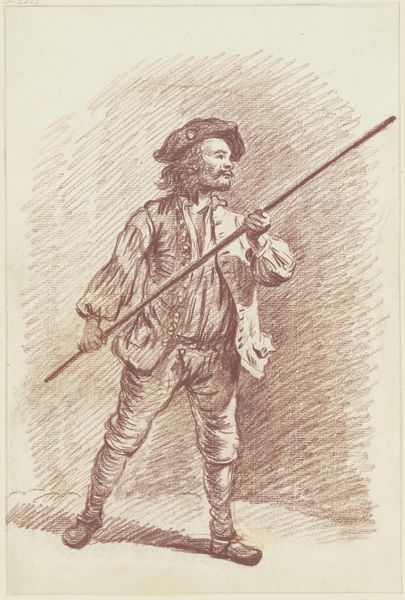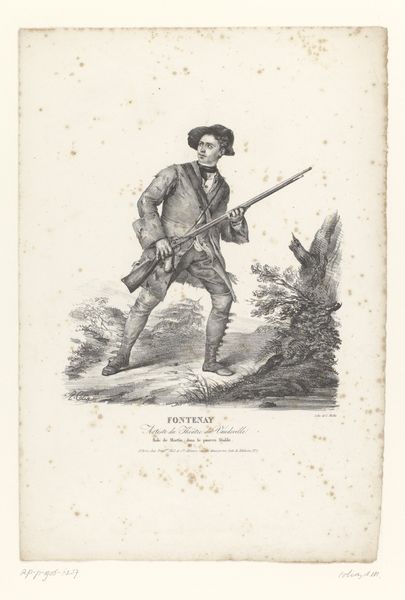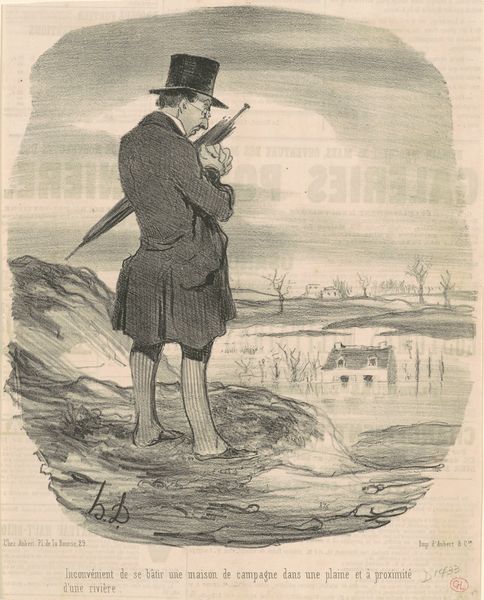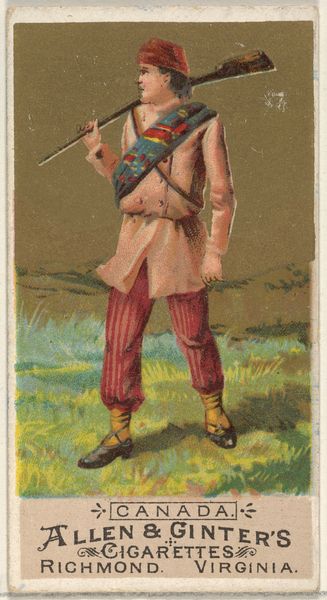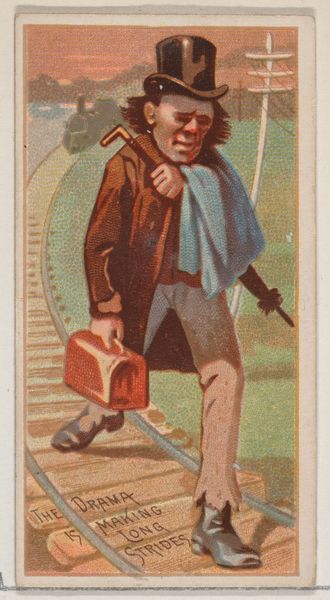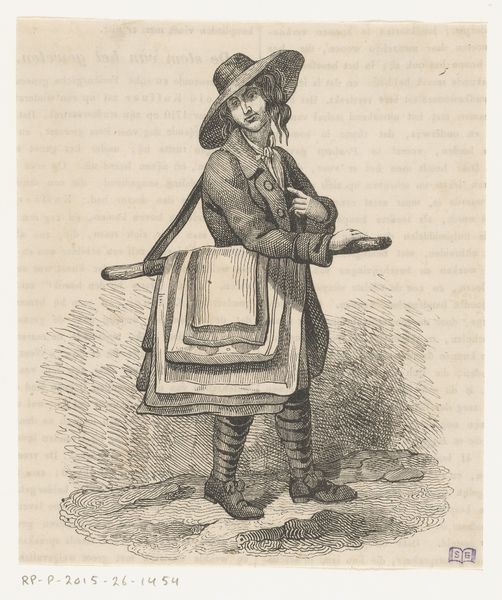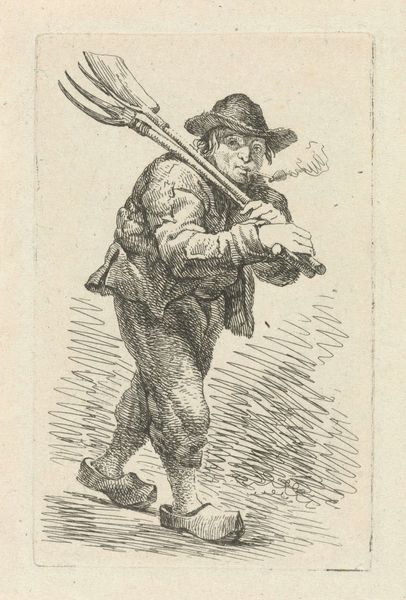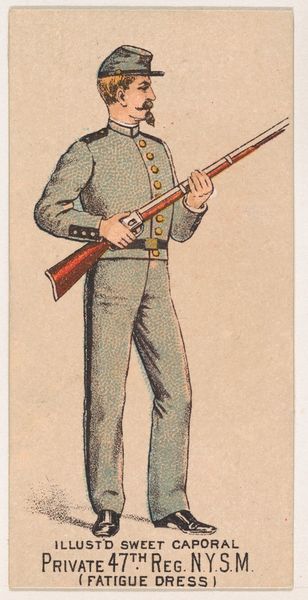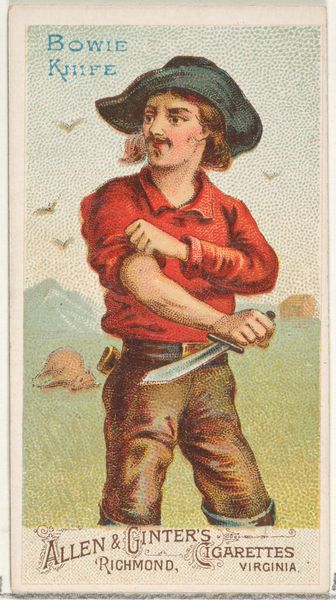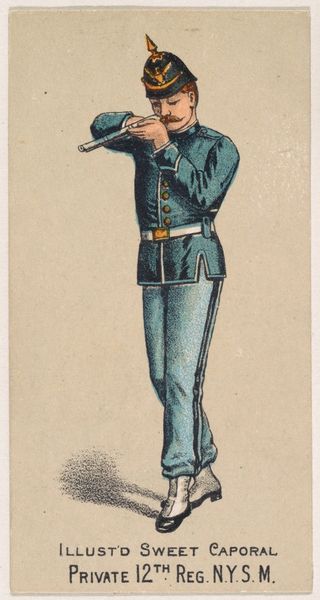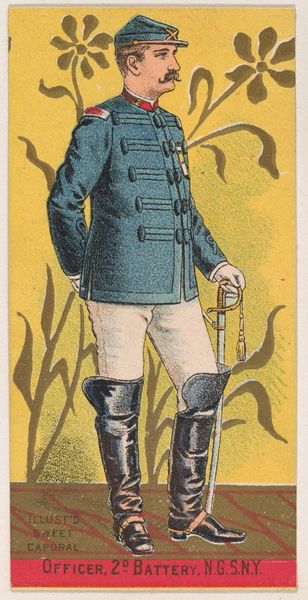
Life in Camp, Part 2: In the Trenches; Good Bye; Fording; Extra Ration; The Field Barber; The Girl He Left Behind Him; Drummer; A Deserter; Home on Furlough; The Rifle Pit; Teamster; Our Special 1864
0:00
0:00
drawing, coloured-pencil, print
#
drawing
#
coloured-pencil
#
narrative-art
# print
#
caricature
#
war
#
caricature
#
figuration
#
coloured pencil
#
soldier
#
men
#
history-painting
#
academic-art
#
watercolor
Dimensions: each sheet: 4 1/8 x 2 3/8 in. (10.4 x 6.1 cm)
Copyright: Public Domain
Editor: This drawing by Winslow Homer, “Life in Camp, Part 2: In the Trenches; Good Bye; Fording; Extra Ration; The Field Barber; The Girl He Left Behind Him; Drummer; A Deserter; Home on Furlough; The Rifle Pit; Teamster; Our Special”, dating to 1864, presents itself with this rather… stoic man sitting atop a cannon. The materiality strikes me, particularly that contrast between the hardness of the metal and the softness suggested by the coloured pencils. How might we interpret this interplay of materials within the social context of the Civil War? Curator: Let’s consider what Homer is showing us here, and *how* he's doing it. We have a carefully rendered image, seemingly designed for mass consumption, probably as a print. It presents this singular figure of a soldier, slightly cartoonish and arguably romanticized, contrasted sharply with that heavy piece of artillery beneath him. Is he meant to embody an ideal, perhaps of leisure, amid the mechanized horrors of warfare? What kind of labour does this representation obscure, and what does it highlight? Editor: That's interesting - it makes me think about the relationship between labor and leisure during wartime, which seems inherently skewed. Is Homer commenting on that tension by placing the figure "at rest" upon this piece of machinery? Curator: Precisely! Consider also the colored pencil medium: accessible, easily reproduced, a stark contrast to the heavy, expensive materials we associate with high art intended for elite patrons. So how does Homer's conscious choice of accessible material play into its accessibility to the masses during this tumultuous social upheaval, eh? Is he trying to communicate, perhaps on the nature of social divisions that caused the conflict? Editor: It makes you think who was this for? Thank you. Curator: Of course, now let us look at another interesting artwork.
Comments
No comments
Be the first to comment and join the conversation on the ultimate creative platform.

